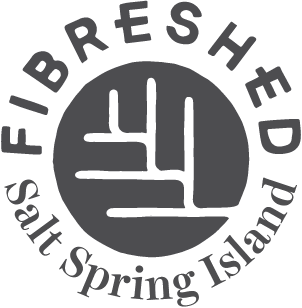[THIS IS SAMPLE TEXT FROM FIBERSHED.COM, PLEASE REMOVE & CREATE ORIGINAL CONTENT] A significant number of the sheep in our region are moved through and grazed upon the vegetation of California’s rangeland, pasture, perennial and annual cropland systems. Currently alpaca, llama and mohair producers also utilize pasture (managed, grazed domestic forage) and to some degree rangeland (grazed resident vegetation) for their agricultural practices. All of these grass-fed, fiber-producing animals have the potential to graze on managed landscapes where Carbon Farming practices are being implemented, thus creating products that are Climate Beneficial™, by virtue of their integral place in the Carbon Farming system: watch the video below to learn more.
[THIS IS SAMPLE TEXT FROM FIBERSHED.COM, PLEASE REMOVE & CREATE ORIGINAL CONTENT – QUOTING FROM & LINKING TO FIBERSHED.COM IS ENCOURAGED IF YOU WISH TO SHARE CONTENT] Carbon Farming Practices can be measured and monitored for the enhancement of permanent soil carbon storage, and therefore material coming from these landscapes can be verified as Climate Beneficial. In an initial research study by Dr. Marcia deLonge of UC Berkeley’s Silver Lab, it was shown that sheep grazed on compost-applied rangelands produced wool with a net carbon benefit. Moving that net negative footprint wool through a regional and renewable energy powered supply chain would produce a garment with a negative CO2 footprint. Comparing conventional to Climate Beneficial production shows a carbon footprint differential of over 150 pounds of CO2 per garment. See the comparison below.
Download a PDF of the study: LCA-wool-garment
[THIS IS SAMPLE TEXT FROM FIBERSHED.COM, PLEASE REMOVE & CREATE ORIGINAL CONTENT – QUOTING FROM & LINKING TO FIBERSHED.COM IS ENCOURAGED IF YOU WISH TO SHARE CONTENT]
We are now working to advance Climate Beneficial status to ranches and farms in our community through a process that includes:
- Educating our producers on how to take baseline carbon samples using our Citizen Science Protocol (if the farmer or rancher doesn’t already have their soil carbon baseline). We are processing soil samples in collaboration with UC Davis’s Gaudin Lab.
- Engaging our producer community in Carbon Farm planning processes in partnership with Resource Conservation Districts (and other trained entities), to develop whole-farm ranch & farm plans, that exist as a roadmap for the producer to assess the potential carbon sequestering impact of implementing a suite of new practices.
- Covering a portion of costs of the implementation of carbon farm practices through generating early stage financial support from brands, philanthropy, and engaged citizens.
- Engaging on-going implementation of Carbon Farming Practices through the dissemination of a Carbon Farm Fund that grows through the collection of a percentage of the total sale of Climate Beneficial Goods.
Implications for Brands and Artisans
[THIS IS SAMPLE TEXT FROM FIBERSHED.COM, PLEASE REMOVE & CREATE ORIGINAL CONTENT – QUOTING FROM & LINKING TO FIBERSHED.COM IS ENCOURAGED IF YOU WISH TO SHARE CONTENT]
Fibershed assessed California wool for its quality and quantity. It is now known that a considerable amount of California’s wool (over 900,000 pounds per year) is a fine enough micron count for some form of garment production, and over two million pounds is suitable for felt, bedding, and durable goods. Regional and place-based clothing and durable goods offers a new wave of opportunity to explore the potential of our landscape to be managed for carbon draw-down while providing essential goods for human need. Together, we can build collaborations between farmers, ranchers, land-managers, makers, and end-users to move carbon out of our atmosphere, and into our soils — while building our local economies, and generating heirloom quality and place based durable goods and textiles.
Consumer demand for natural fibers and ethically, locally, and domestically produced goods is on the rise, along with a desire for increased supply chain transparency and materials’ traceability from textile manufacturers and retailers. It is logical to think that consumer values like these may create increased value for wool producers who provide domestically grown, traceable wool.
In 2017, Fibershed was awarded a USDA Value Added Products Grant to conduct a feasibility study that sought to identify finished products and programs that might increase the value of wool, and thus revenue to Northern California wool producers. This study also investigated whether consumer interest in regenerative agriculture practices would translate to higher prices for raw wool and/or finished wool products.
“Growing Value for Wool Growers,” an economic feasibility study and new business model centers around three main areas of research: consumer demand analysis, wool program performance, and conservation practice implementation costs. With a review of both high micron (felt) and low micron (fine cloth) products, surveys of consumer interest and willingness to pay for Climate Beneficial products, and and interviews with designers, this study lays the groundwork for scaling regenerative agriculture and transparent, equitable supply chains for natural fibers.
Download and read the full report here: Fibershed USDA VAPG Economic Feasibility Study
Photos by Paige Green, illustration by Andrew Plotsky
